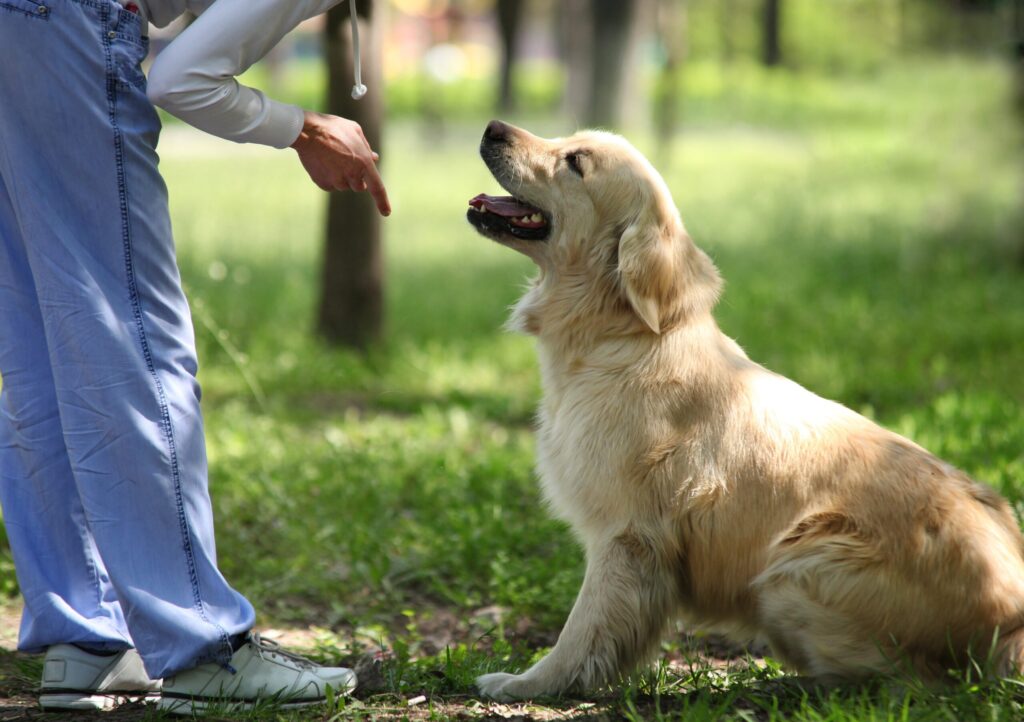
Dog training is much more than just teaching orders; it’s about creating a strong link between humans and their canine companions while encouraging excellent conduct. Dogs, often known as man’s best friend, bring joy, companionship, and love into our lives. Proper training is crucial to ensure that our four-legged friends are well-behaved, and joyful, and enhance our households. In this essay, we will look at the importance of dog training, effective training methods, and the good effects it has on both dogs and their owners.
The Importance of Dog Training
Dog training is critical for a number of reasons:
- Behavioral Enhancement
Training aids in the development of appropriate conduct in dogs, making them enjoyable and well-behaved members of the family. It teaches kids what is appropriate in a human setting.
- Communication
Training improves communication between dogs and their owners. It enables humans to communicate their expectations, and dogs learn to respond to cues and directions.
- Creating Relationships
Training sessions provide an opportunity for dogs and owners to bond. Positive interactions throughout training help to strengthen the emotional bond.
- Safety
Training assures the safety of both the dogs and their human companions. Dogs who respond to commands such as “stay” or “come” are less likely to become involved in harmful circumstances.
- Stimulation of the Mind
For dogs, mental stimulation is just as important as physical activity. Training exercises stimulate their thoughts, preventing boredom and other behavioral issues.
Dog Training Methods

To teach dogs, various methods and approaches are employed, each adapted to the dog’s individual needs and characteristics:
- Reinforcement Learning: Positive reinforcement is the practice of rewarding desired actions with food, praise, or toys. Dogs are encouraged to repeat certain activities in this way.
- Clicker Instruction: Clicker training employs a clicker to mark the desired behavior and is frequently accompanied by a positive reward. The sound of the clicker indicates to the dog that they have done something correctly.
- Obedience Training: Obedience classes are structured training sessions led by expert trainers. They are especially good for pups and first-time dog owners.
- Socialization: Dogs are socialized through being exposed to new situations, people, and other dogs. This assists kids in being well-adjusted and self-assured.
- Consistency – Consistent directives and expectations are essential for effective training. Everyone in the house should use the same commands and follow the same set of rules.
The Advantages of Dog Training
Effective dog training has a wide range of positive effects that benefit both canines and their owners:
Dogs Who Are Well-Behaved

Trained dogs are more likely to behave well, making them enjoyable companions in a variety of situations.
Stress Reduction
Owners of well-trained dogs frequently report reduced stress because they know their dogs are well-behaved and less prone to cause problems.
Increased Security
Trained dogs are less likely to engage in risky actions that could endanger themselves or others.
Bonds that are stronger
Time spent teaching and working together increases the attachment between dogs and their owners.
Interaction in the Community
Well-behaved dogs are more welcome in public places, allowing owners to participate in more activities with their pets.
Dog Training Difficulties
While dog training is enjoyable, it is not without its difficulties.

- Patience
Training can be a time-consuming procedure; therefore, patience is essential. Because not all dogs learn at the same rate, it is essential to be patient and persistent.
- Consistency
Maintaining consistent commands and expectations can be difficult, especially in households with numerous individuals.
- Differences Between Breeds
Temperament and learning styles vary by breed. Some breeds respond better to training than others, and puppies may require a little more patience.












